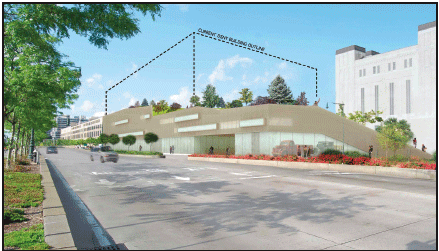By Albert Amateau
State Supreme Court Justice Joan B. Lobis last week dismissed the lawsuit by Hudson Square residents, businesses and community groups challenging the city’s plan to build a three-district Sanitation garage on Spring St.
The Jan. 11 ruling also dismissed the part of the suit that challenged the 2005 settlement that Friends of Hudson River Park reached with the city for a timetable to get the Department of Sanitation’s garages off Gansevoort Peninsula and Pier 97, at W. 59th St., to enable the piers to become part of the Hudson River Park.
The suit was filed at the beginning of last year to block the proposed $500 million project with a 120-foot-tall garage for trucks and equipment from three Sanitation districts on property now owned by UPS.
The plan, presented to the public in January 2005 and approved by the City Council in 2008, calls for a salt shed and diesel fueling in an area near the entrance to the Holland Tunnel that has been changing from industrial to mixed uses, including high-end residential condos.
Susan Amron, the city’s lead attorney in the case, hailed the decision.
“This ruling will allow the Department of Sanitation to move forward with construction of this much-needed facility,” Amron said on Jan. 14. “The new garage will provide space to park, clean, refuel and maintain vehicles, which will allow the city to more ably provide essential services to the Tribeca and neighboring communities, in addition to allowing for the inclusion of the Gansevoort Peninsula into the Hudson River Park.”
Michael Kramer, who represents the owner of the St. John’s Center building, one of the plaintiffs in the case, said on Jan. 13 that the challengers have not yet decided whether to appeal the ruling.
“Of course, we are disappointed,” Kramer said.
Phil Mouquinho, owner of the restaurant P.J. Charlton on Greenwich St., one of the plaintiffs, said he could not believe the ruling. The judge, he said, ignored the project’s impact on traffic and pollution in the neighborhood.
Mouquinho, however, noted that even if Justice Lobis’s ruling stands up, other agencies, including the Port Authority and the city Department of Transportation, would have to approve aspects of the project as they come online.
“It’s not over till it’s over,” Mouquinho said.
However, A.J. Pietrantone, executive director of Friends of Hudson River Park, was gratified by what he called the “correct ruling.” But he said the Friends group, which advocates and raises funds for the 5-mile-long Hudson River Park, was sympathetic to neighbors’ concerns. He said his Friends organization “hopes that a better alternative for the current plan can still be advanced.”
The decision said the plaintiffs had no standing to challenge the Friends’ settlement with the city, even though the agreement mentions the Spring St. location. Justice Lobis agreed with city and state lawyers that the agreement merely cites Spring St. as one of several possible alternatives to the existing Gansevoort Sanitation station.
The judge also rejected the claim that the plan was arbitrary, violated the city’s “fair share” principles and did not take the requisite “hard look” at alternatives.
Justice Lobis did not accept the idea that the Department of Sanitation did not adequately consider alternatives, including the Hudson Rise plan proposed by the plaintiffs.
“D.S.N.Y, identified numerous reasons why [Hudson Rise] was not considered in the scope of alternatives,” the judge said. Lobis also rejected the plaintiffs’ claim that the environmental impact statement and the city approval process for the project were flawed.
Richard Barrett, a member of the Canal West Coalition and a plaintiff
in the suit, said later that courts usually follow precedents that go along with municipalities in such lawsuits.
“It’s like the divine right of kings, and its time for reform,” he said. “I think [the decision] was a done deal from the beginning,” he added. Nevertheless, Barrett said he thought the issue was still alive and that changes in the plan were still possible.































